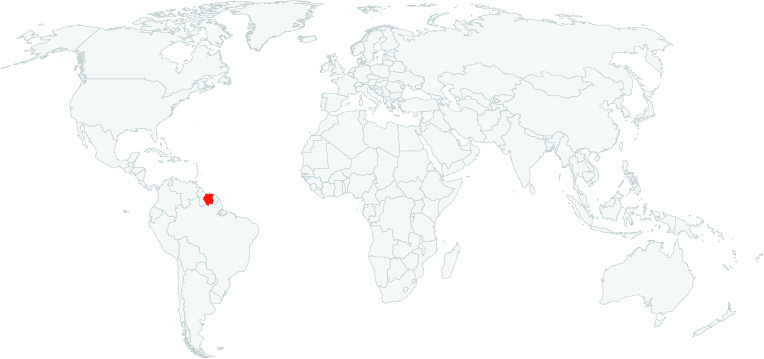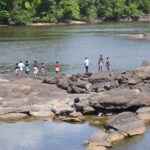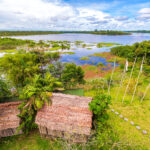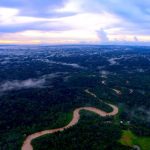
Despite its environmental track record, Suriname is still the only country in South America that hasn’t formally recognized the territorial rights of Indigenous and Maroon peoples.
The Saamaka claim that a 2007 ruling by the Inter-American Court of Human Rights should give them collective land rights, yet the government continues to grant forestry and mining concessions on their land. The Surinamese government has granted 447,000 hectares (1.1 million acres) of concessions on Saamaka land, or 32% of the territory, according to the International Land Coalition.
In a letter to the president this month, Saamaka communities asked the government to stop granting land concessions and to officially demarcate their territory.
Since 2007, the Inter-American Commission on Human Rights (IACHR) has ruled on several occasions that Suriname should suspend harmful economic activities and recognise and respect the territorial boundaries of about 30,000 Saamaka people. However, since the initial IACHR judgment, deforestation in Saamaka lands has increased fourfold. Concessions have also been granted to multinational mining companies and the timber industry, upsetting and dividing Indigenous and tribal communities with historical claims to collective lands.
Amazon nations have attacked in a joint declaration the “proliferation” of environmental rules in trade, echoing a growing backlash against new EU deforestation requirements.
The final document does not single out the European law specifically, but it condemns “the proliferation of unilateral trade measures based on environmental requirements and norms which constitute trade barriers”.
Mongabay has begun publishing a new edition of the book, “A Perfect Storm in the Amazon,” in short installments and in three languages: Spanish, English and Portuguese.
Chronicling the efforts of nine Amazonian countries to curb deforestation, this edition provides an overview of the topics most relevant to the conservation of the region’s biodiversity, ecosystem services and Indigenous cultures, as well as a description of the conventional and sustainable development models that are vying for space within the regional economy.
Click here to access the Global Illegal Logging and Associated Trade (ILAT) Risk assessment tool and to download the Forest Trends User Guide describing the functionality of the ILAT Risk Data Tool.
Click here to access the Cattle Data Tool.




